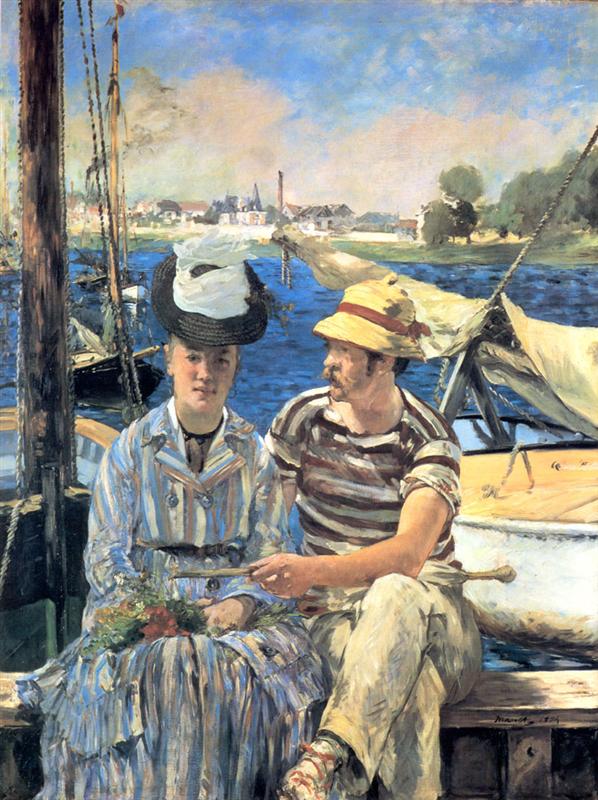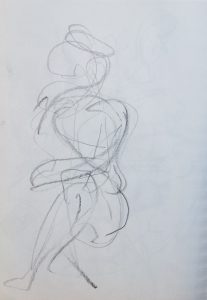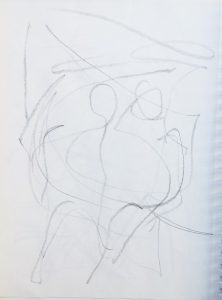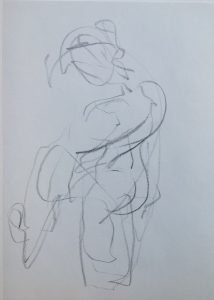
Gesture drawing is an essential practice in Kimon Nicolaïdes’ “The Natural Way to Draw – A Working Plan for Art Study”.
While incredibly helpful in this original context, it also works great in many others. My favourite is establishing a deeper connection with painting masterpieces, both while visiting museums and in the studio, while studying paintings from reproductions. But it also helps if you need to reconnect with yourself, with your own mental and emotional state — get unstuck if you are stuck, let go of what you need to let go.
This practice works for everyone — from someone who thinks they cannot draw at all to an art student to an accomplished artist.
- It works if you don’t want to paint yourself, but just want to understand paintings better.
- It works if you are learning to draw or paint: it is something you learn simply by doing it, and it improves your drawing and painting skills.
- And it works if you already know how to draw: if you learned from Nicolaïdes, you know it yourself; if you — like me — learned to draw in another way, it may just open new paths, overcome blocks, and refresh your approach to drawing.
How is it done?

The goal of a gesture drawing is not to produce a meaningful drawing, but to feel the movement you are drawing — feel it in your own body, and through it, the associated sensations and emotions. You can ask a model to take one-minute poses, or just go somewhere where people move a lot.
That’s how Nicolaïdes’ describes the process:
“As the model takes the pose, or as the people you watch move, you are to draw, letting your pencil swing around the paper almost at will, being impelled by the sense of the action you feel. Draw rapidly and continuously in a ceaseless line, from top to bottom, around and around, without taking your pencil off the paper. Let the pencil roam, reporting the gesture.
You should draw, not what the thing looks like, not even what it is, but what it is doing.”
How does this work for studying a painting?
After all, the painting is still, right? It captures a single moment, not a movement.

But that’s not quite the case — the moment is captured, but it is — as a rule — not static; in a master painting, we still feel the movement. That movement is what you are trying to capture in gesture drawing. Or, if there is no movement — if there is really a moment of stillness, you can feel it in your body, too. A woman sitting in silent reverie, weighted down by her thoughts — and a woman captured in the midst of a joyful movement — these are two quite different gestures, and your body’s responses to them is different. This response is what you are letting your hand draw.
Here is what Nicolaïdes writes about gesture drawing from life, but this approach transfers naturally to studying a painting:
“Sometimes students ask whether they should think of gesture in this or that or the other way. My answer to that is that you should rely on sensation rather than thought. Simply respond with your muscles to what the model is doing as you watch, and let your pencil record that response automatically, without deliberation. Loosen up. Relax. Most of the time your instinct will guide you, sometimes guide you the better, if you can learn to let it act swiftly and directly without questioning it. Let yourself learn to reason with the pencil, with the impulses that are set up between you and the model. In short, listen to yourself think; do not always insist on forcing yourself to think.”
What if there are no people in the painting?
Does it mean there are no gestures to feel and draw?

This might be the only drawing practice that’s easier to do with a human figure — because it’s easier for us to empathise with a human, to feel their body as “our own”, to put ourselves in their shoes. It’s more difficult to connect with a tree, or an apple, or a cloud — to be, for a moment, one with that tree, that apple, that cloud — but that, in a sense, is what the painter does, being completely “as one” with the visible reality, dissolving the duality between “subject” and “object”.
Gesture drawing can also help you feel the inner gesture of the painting itself: just don’t look at one figure, or one object, but at the whole canvas, and feel its movement in your body. Once again, don’t overthink it, just let your sensations guide your hand.
How to gesture-draw a self-portrait?

If you are going through a hard or confusing time, if you are stuck in some way, the gesture drawing practice can also help you “listen” to your feelings, and figure out what’s going on.
Here, gesture drawing turns into a kind of self-portrait. But you don’t need to look in the mirror: you just let your hand express what your body feels, its sensations and its tensions.
Materials
All you need is some cheap paper (about 10”x15”, or 25 cm x 40 cm) and soft pencils (3B or 4B). Each gesture drawing should be very quick (one-two minutes), and — as already mentioned — it is a good idea to throw most of them away as soon as they are finished (I made an exception for these four of mine just for the sake of illustrating this post).
This post is a part of online program, “The Making of a Painting Masterpiece”.